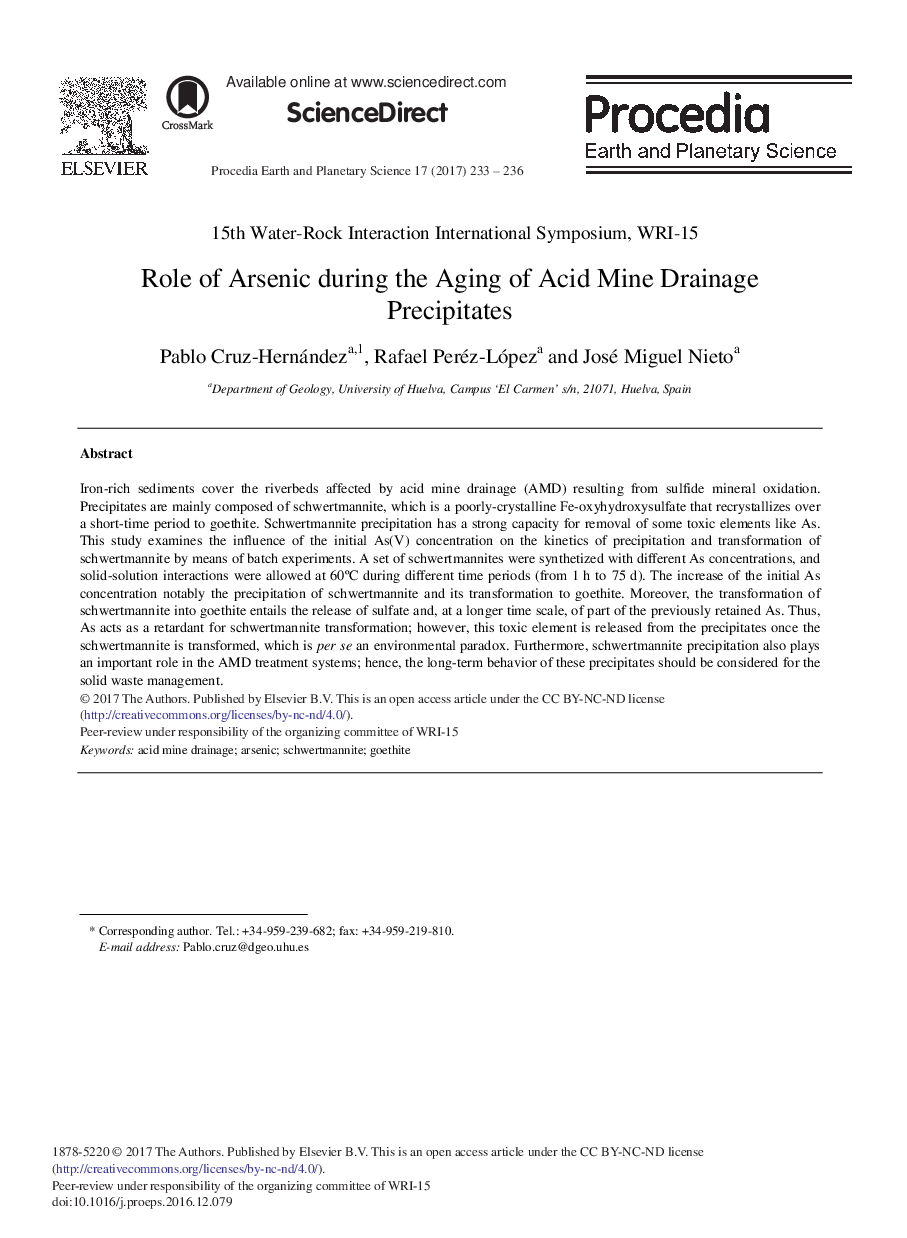| Article ID | Journal | Published Year | Pages | File Type |
|---|---|---|---|---|
| 5779277 | Procedia Earth and Planetary Science | 2017 | 4 Pages |
Iron-rich sediments cover the riverbeds affected by acid mine drainage (AMD) resulting from sulfide mineral oxidation. Precipitates are mainly composed of schwertmannite, which is a poorly-crystalline Fe-oxyhydroxysulfate that recrystallizes over a short-time period to goethite. Schwertmannite precipitation has a strong capacity for removal of some toxic elements like As. This study examines the influence of the initial As(V) concentration on the kinetics of precipitation and transformation of schwertmannite by means of batch experiments. A set of schwertmannites were synthetized with different As concentrations, and solid-solution interactions were allowed at 60°C during different time periods (from 1 h to 75 d). The increase of the initial As concentration notably the precipitation of schwertmannite and its transformation to goethite. Moreover, the transformation of schwertmannite into goethite entails the release of sulfate and, at a longer time scale, of part of the previously retained As. Thus, As acts as a retardant for schwertmannite transformation; however, this toxic element is released from the precipitates once the schwertmannite is transformed, which is per se an environmental paradox. Furthermore, schwertmannite precipitation also plays an important role in the AMD treatment systems; hence, the long-term behavior of these precipitates should be considered for the solid waste management.
